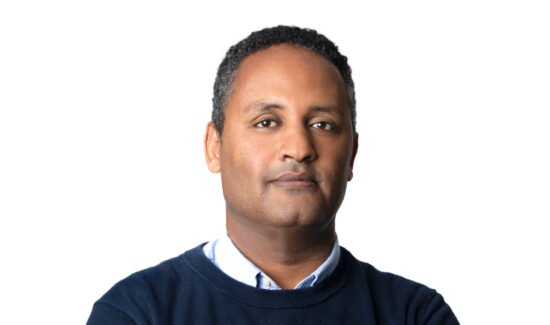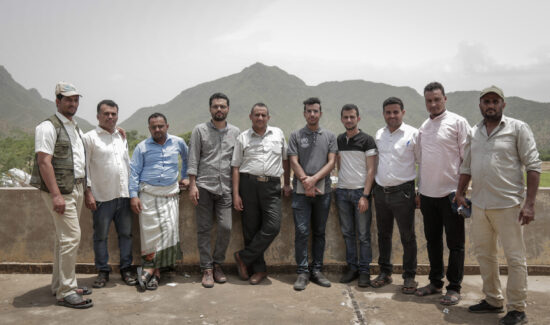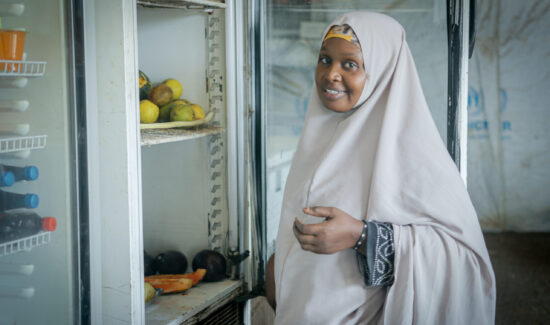UNHCR and IKEA Foundation Crowd Sources Solution to Refugee Language Learning
May 12, 2014

UNHCR and IKEA Foundation to pursue refugee second-language learning solution
The United Nations Refugee Agency (UNHCR) and the IKEA Foundation will team up to pursue an idea for an innovative model that could help refugees overcome language barriers that can reduce access to quality educational experiences. The proposed model, dubbed “Tablets for Education”, emerged as the winning idea after UNHCR’s seven-week long challenge that crowdsourced solutions online from the agency’s staff, partners, and refugee communities.
The winning idea comes from Ioannis Papachristodoulou, a Senior IT Assistant for UNHCR in Athens, Greece. His idea is simple: distribute tablets to refugee children that are pre-loaded with existing language-learning applications. The intended result? Through mobile application technology, the first and second language skills of refugee learners can be fostered or improved in both self-study and classroom contexts.
Funding to research and pilot Papachristodoulou’s idea will come from a €2.5 million IKEA Foundation grant awarded to UNHCR’s Innovation Unit – an inter-departmental team within the agency that champions more efficient, creative solutions to the daily challenges that refugees face.
“We want to help create better opportunities for the millions of refugee children and their families who have been forced to flee their homes due to war, famine, and natural disaster,” explains Jonathan Spampinato, Head of Strategic Planning and Communications at the IKEA Foundation. “Creating better educational opportunities for displaced children and their families is important to us. This is why we partner with UNHCR Innovation.”
The accessibility and mobility of tablets could prove to be an efficient way to help secure better language-learning opportunities for displaced children and their families.
“Even in the best circumstances, learning and using a new language in a meaningful way is challenging. But the practical conditions surrounding refugee education makes language learning even more difficult,” explains Jacqueline Strecker, ICT Innovations and Education Specialist for UNHCR in Geneva, Switzerland. “When displaced children, young people, and adults can’t communicate in their new environments, it hinders their ability to engage and learn. This is why UNHCR has taken this important step in sourcing new, creative solutions to refugee language learning.”
Ordinarily, finding a new, creative solution like Papachristodoulou’s may have started with a top-down review of how the agency’s services function in the field. Now, out of a commitment to foster innovation within the agency, UNHCR leadership crowdsources solutions from the ground up by soliciting ideas from staff, partners, and refugees.
This new process is made possible through UNHCR Ideas – the agency’s first online crowdsourcing platform, powered by Mindjet’s SpigitEngage software. UNHCR Ideas was piloted in August 2013, and is managed by UNHCR Innovation.
Launched in 2012 with funding from the IKEA Foundation, UNHCR Innovation facilitates innovations in five key areas, including Learning and Energy, and helps bring new opportunities to millions of refugee communities.
For more information on UNHCR Ideas please visit this infographic that explains the crowd sourcing process here [http://ow.ly/vGz55].
For information on the latest UNHCR Ideas challenge and how you can participate, visit UNHCR Innovation’s Facebook page here [http://bit.ly/1kqtLaf].
###
About UNHCR and UNHCR Innovation
The Office of the United Nations High Commissioner for Refugees was established on December 14, 1950 by the United Nations General Assembly. The agency is mandated to lead and co-ordinate international action to protect refugees and resolve refugee problems worldwide. Its primary purpose is to safeguard the rights and well-being of refugees, including the right to education. It strives to ensure that everyone can exercise the right to seek asylum and find safe refuge in another State, with the option to return home voluntarily, integrate locally or to resettle in a third country. It also has a mandate to help stateless people.
UNHCR Innovation is a multi-year inter-departmental team, established in 2012 under the stewardship of the Deputy High Commissioner with funding from the IKEA Foundation. UNHCR Innovation looks for more efficient, effective and creative solutions to challenges that refugees are faced with across UNHCR operations worldwide. In line with UNHCR’s mandate, the ultimate goal of UNHCR Innovation is refugee protection, self-reliance, empowerment, dignity and education. To fulfill its mandate, UNHCR Innovation engages staff members to re-think the way UNHCR works; the way it involves refugees in the design of the programs and the way it looks at good practices in the humanitarian and private sector world. Learn more at http://www.unhcrinnovation.org and http://www.facebook.com/UNHCRInnovate
About IKEA Foundation
The IKEA Foundation aims to improve opportunities for children and youth in the world’s poorest communities by funding holistic, long-term programmes that can create substantial, lasting change. The Foundation works with strong strategic partners applying innovative approaches to achieve large-scale results in four fundamental areas of a child’s life: a place to call home; a healthy start in life; a quality education; and sustainable family income. Currently-funded programmes benefit an estimated 100 million children by 2015. Learn more at www.ikeafoundation.org and www.facebook/IKEAfoundation



